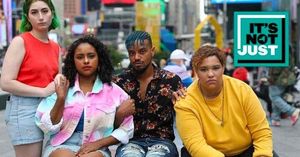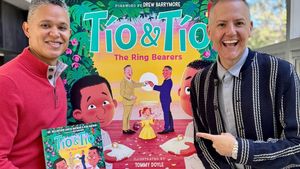Democratic Party delegates and activists will meet next Monday through Thursday in Chicago to formally confirm Kamala Harris as the party’s presidential nominee. The week will be full of speeches, caucus meetings, and celebrations.
Keep up with the latest in LGBTQ+ news and politics. Sign up for The Advocate's email newsletter.
President Joe Biden will address the convention Monday night. Harris’s running mate, Tim Walz, will speak Wednesday, and Harris will accept the nomination and speak Thursday. Former presidential candidate Hillary Clinton and former Presidents Bill Clinton and Barack Obama are scheduled to address the gathering as well.
 Joe Raedle/Getty Images
Joe Raedle/Getty Images
Party conventions these days are a largely ceremonial affair, but that hasn’t always been the case — some years the presidential nomination and the platform have been contested. Here’s a look at the history of the Democratic convention and what happens there.
When did the Democratic convention start?
The party, then known as the Democratic-Republican Party, held its first convention in 1832 in Baltimore. Previously, parties selected their presidential nominees mostly through congressional caucuses. The convention system was spurred by the election of 1824, in which no candidate received a majority of the electoral vote and the U.S. House of Representatives had to decide the election, choosing John Quincy Adams.
At the 1832 convention, delegates nominated President Andrew Jackson for reelection but rejected his running mate, John C. Calhoun. Calhoun had endorsed the controversial concept of nullification, the idea “that individual states can invalidate federal laws or judicial decisions they deem unconstitutional,” as the National Constitution Center explains. Delegates selected Martin Van Buren as Jackson’s vice-presidential nominee instead.
 Corbis via Getty Images
Corbis via Getty Images
At that first convention, delegates adopted a rule that a candidate must receive the support of two-thirds of the delegates to secure the nomination. That was to cause chaos in later years.
Democratic convention controversies over the years
Slavery was the main issue dividing the party in the mid-19th century. Democrats were not antislavery (the Republican Party was founded in the 1850s as an antislavery party, with some member simply opposing its expansion and others calling for abolition), but some Dems wanted to allow unlimited expansion of slavery, while others favored letting each territory decide whether to allow the practice. At the 1856 Democratic convention, it took 49 ballots for delegates to decide on a nominee — James Buchanan, who had largely stayed out of the fray. It then took 57 ballots for delegates to select a nominee at the 1860 convention, with them deciding on Stephen Douglas. In that election, southern Democrats broke off from the party, nominating John Breckinridge for president. Republican Abraham Lincoln won the 1860 election, and the rest is history.
 Chicago History Museum/Getty Images
Chicago History Museum/Getty Images
The two-thirds rule made things even crazier in the 20th century. In 1912, delegates selected Woodrow Wilson as their nominee on the 49th ballot. Then in 1924, the convention went 16 days and saw controversy over the adoption of platform language condemning the recently revived Ku Klux Klan. The party ended up with a plank denouncing “any effort to arouse religious or racial dissension.” And it agreed on a nominee only on the 103rd ballot, choosing John Davis, a lawyer and diplomat, after two contentious contenders withdrew — William McAdoo, who didn’t want to alienate the Klan, and Al Smith, who wanted to repudiate the virulently racist group. Smith would be the party’s nominee in 1928, the first Roman Catholic to be in that position, but he lost the election to Republican Herbert Hoover. The New York Times has a comprehensive article on the contentious 1924 convention.
It required only four ballots for Franklin D. Roosevelt to become the Democratic nominee in 1932. He turned the party in a decidedly more progressive direction, and he also urged the abolition of the two-thirds rule, to which delegates agreed. But controversies continued, often over race. In 1948, southerners, known as “Dixiecrats,” walked out of the convention and declined to support Harry S. Truman for reelection, instead endorsing segregationist Strom Thurmond. Thurmond was then governor of South Carolina and later became a U.S. senator from the state. He switched to the Republican Party in 1964. Many other white southerners deserted the Democratic Party in the late 20th century as well because of the party’s embrace of civil rights.
The 1968 protests
The 1968 convention, like this year’s held in Chicago, was marked by protests over the Vietnam War. Democratic President Lyndon Johnson had greatly expanded the war, but he was aware of growing opposition, and he also had health concerns, so he decided not to run for another term. The Democratic primaries that year saw antiwar candidates Eugene McCarthy and Robert F. Kennedy winning swaths of delegates. But Kennedy was assassinated in June, just after winning the California primary, and the convention started with no candidate holding a majority of delegates — most were still chosen not by primaries but by party caucuses. The Democrats ended up choosing Hubert Humphrey, Johnson’s vice president, as their nominee. Humphrey hadn't even run in any primary.
 Bettmann Contributor via Getty Images
Bettmann Contributor via Getty Images
But for all the action inside the convention, there was more outside. Antiwar protesters from around the nation gathered in Chicago, and there were violent clashes between the protesters and law enforcement. A federal grand jury indicted eight of the organizers on charges of conspiracy and crossing state lines to incite a riot. One of them, Bobby Seale, ended up being tried separately, so the Chicago Eight became the Chicago Seven. All of them were eventually cleared of the initial charges, although they served prison time for contempt of court.
What are conventions like now?
Now party nominees are chosen through primaries, and the nominee is usually known far in advance. President Joe Biden’s withdrawal from the race had some observers thinking there would be a contested convention this year, but the delegates he’d won in primaries quickly committed to Vice President Kamala Harris, whom Biden had endorsed.
So now conventions are usually peaceful and celebratory affairs, but protests still happen and delegates voice disagreements.
 Pictorial Parade/Getty Images
Pictorial Parade/Getty Images
In 1972, the Democrats chose George McGovern as their nominee, but Shirley Chisholm, the first Democratic woman and African American to seek the nomination, had her supporters. (Margaret Chase Smith had sought the Republican nomination in 1964.) In 1980, gay rights supporters demonstrated outside the convention in New York City, while inside, the Democrats became the first major U.S. political party to include gay rights in its platform.
Activists had first sought the language in 1972, when gay man Jim Foster and lesbian Madeline Davis became the first out members of the LGBTQ+ community to address the Democratic convention — or any major-party national convention. In 2016, Sarah McBride became the first out transgender person to speak at the convention. The party is strongly supportive of LGBTQ+ rights.
 Michel Philippot/Sygma via Getty Images
Michel Philippot/Sygma via Getty Images
Pro-Palestinian protests are expected this year.
What is a delegate, and how are they selected?
Delegates represent their state, territory, or community at the convention. “Delegates are selected in primaries or caucuses at state-level party conventions and are typically early supporters of a candidate, party activists or political leaders,” USA Todayexplains. Some are pledged delegates, which means they must support the candidate who wins their state’s primary or caucus. Unpledged delegates may vote for anyone. The Democratic Party, unlike the Republican Party, has superdelegates, who are elected officials or party leaders, and they may vote for anyone as well. There is usually a roll call of delegates at the convention, but this year the Democrats held a virtual roll call ahead of time, with delegates giving their backing to Harris.
 Chip Somodevilla/Getty Images
Chip Somodevilla/Getty Images
Delegates are selected according to the state parties’ bylaws and usually at state caucuses or conventions. You can check with your individual state party on what forms to file or other hoops to jump through to become a delegate. Superdelegates automatically receive their status.


 Joe Raedle/Getty Images
Joe Raedle/Getty Images







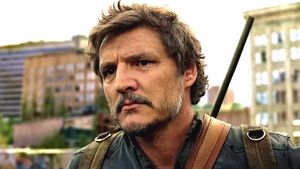



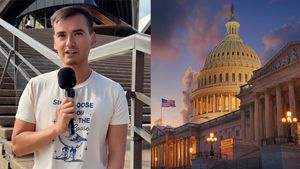


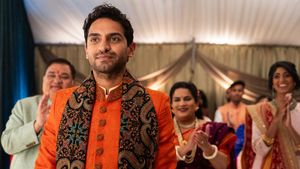
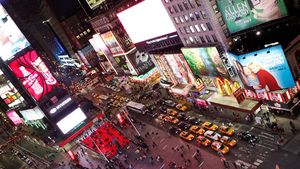
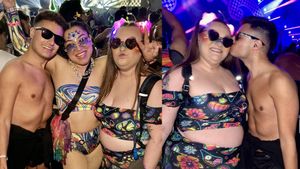






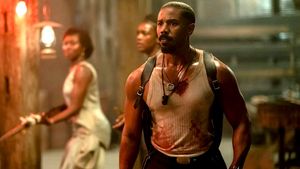





 Corbis via Getty Images
Corbis via Getty Images Chicago History Museum/Getty Images
Chicago History Museum/Getty Images Bettmann Contributor via Getty Images
Bettmann Contributor via Getty Images Pictorial Parade/Getty Images
Pictorial Parade/Getty Images Michel Philippot/Sygma via Getty Images
Michel Philippot/Sygma via Getty Images Chip Somodevilla/Getty Images
Chip Somodevilla/Getty Images
